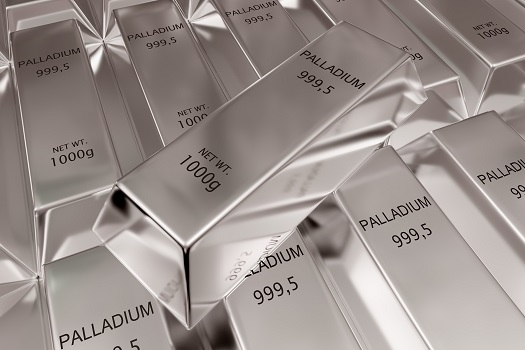How to Know if Your Palladium Is Real
Palladium is a precious metal that has been used extensively in jewelry for almost 100 years. Recently, it has also been utilized as a substitute for platinum in the alloy that makes up white gold. One of the advantages of palladium is its light weight, making it a preferred choice for many different jewelry styles. However, as palladium has grown in popularity, there has also been a rise in reported palladium forgeries. The precious metals experts from First National Bullion, the palladium, silver, and gold dealers San Diego collectors rely on for outstanding quality and service, offer this guide to understanding common attempts at palladium forging as well as a few tips for determining if palladium is real.
Check for Markings
One of the easiest ways to check authenticity is to look for markings on the piece. To combat forgeries, most modern jewelry is marked to denote what it’s manufactured from. For example, 24 karat gold is generally marked “999.” If you have a jeweler’s loupe or a magnifying glass, inspect your piece. If it’s marked “PD950,” it’s more likely to be genuine palladium. If there’s no marking or you’re inspecting an older piece, additional testing is required.
Use a Magnet
Palladium isn’t magnetic. If the piece you have is a forgery, it may contain iron. This is because iron is an inexpensive metal that’s relatively easy to mold and shape. If your piece contains any amount of iron, it will react to a magnet. The magnet test is one of the simplest tests you can perform, as it requires no acids or knowledge of chemistry. However, just because the piece doesn’t react to a magnet doesn’t necessarily mean it’s genuine.
Look for Silver Plating
Palladium and silver have a similar appearance, and this is one of the appeals of palladium for jewelers. Recently, there have been cases of unscrupulous retailers attempting to pass off copper jewelry that has been thinly plated in silver as palladium. Nitric acid can be used to perform a quick test to differentiate between palladium and silver. Palladium won’t react to nitric acid, whereas silver will oxidize and turn a light brown color. It’s important to remember to always use protective gloves and eyewear when working with any type of acid.
Weigh the Jewelry
Palladium weighs less than platinum, which is another metal commonly used in forgeries. If you’re unsure if your piece is genuine, weigh it. Palladium weighs on average 12 percent less than platinum. It’s helpful to have a sample of known palladium to compare to the weight of your new piece.
Take It to an Appraiser
If you’re still unsure whether you have genuine palladium, take the piece to a professional jeweler for an appraisal. Appraisers are professionals who are trained in authenticating jewelry, so you should be able to get a definite answer from one of them.
Whether they’re veteran palladium collectors or investors looking to buy silver bars, San Diego residents should reach out to the experts at First National Bullion. We offer a huge selection of palladium, gold, platinum, and silver items. San Diego collectors who are looking for the finest-quality coins, bars, and bullion should give us a call at 858-666-6570 to speak with one of our precious metals experts.
The statements made in this blog are opinions, and past performance is not indicative of future returns. Precious metals, like all investments, carry risk. Precious metals and coins may appreciate, depreciate, or stay the same in cash value depending on a variety of factors. First National Bullion does not guarantee, and its website and employees make no representation, that any metals for sale will appreciate sufficiently to earn the customers a profit. The decision to buy, sell, or borrow precious metals and which precious metals to purchase, borrow, or sell are made at the customer’s sole discretion.


